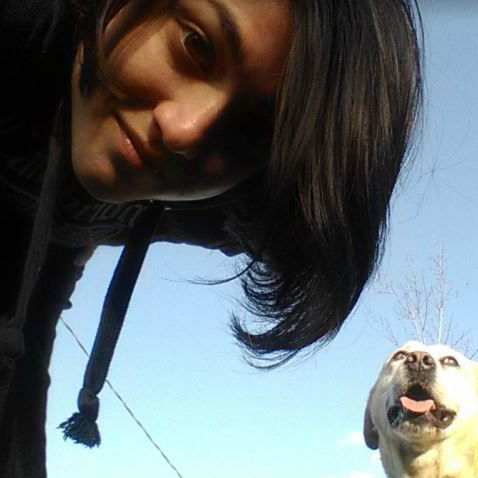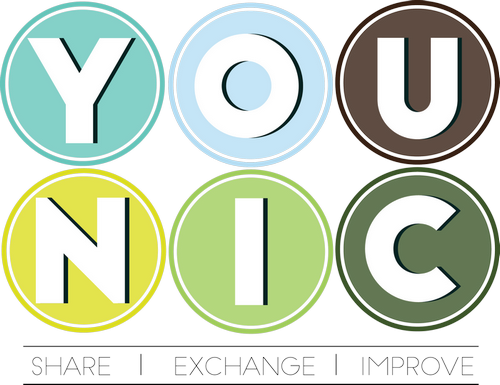Aurora Stramacci
Italian
EVS Volunteer in Colombia
POST MOBILITY ARTICLE
This EVS in Colombia has been a turning point experience for me. Despite the difficulties and obstacles, it gave me a lot, starting from the realisation that working as an international aid worker is the thing for me. Also, I had the opportunity to learn a lot, to live different situations more spontaneously that I was used to. An average, european city folk is generally used to a number of comforts and amenities, totally taken for granted. When you go living within the mountains in a tiny rural village you find out what sustainable life really is and you learn comforts, as far as we like it, are not that essentials.
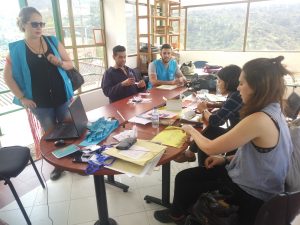
As a foreigner, I had never found such a warm reception before. That’s really awesome and definitely helps a lot the volunteer facing this kind of experieènce. My hosting family in Santa Maria and my mentor’s family, they have been a blessing. They taught me a lot and they treated me as I was part of their groups.
The territory and the nature are amazing. Something very different from ours. There are high mountains, covered by dense subtropical woods, where plants grow up on other plants, where wildflowers, butterflies and birds get very bright colours, where the water comes out from everywhere, forming several waterfalls and creeks.
Speaking about the work activities, my experience in Santa Maria did not satisfy me. During the third month, conditions changed and I was left with no one to work with. I decided to ask for a transfer to ARRAIGO project where I could play my part, measuring myself in different tasks, experiencing teamwork with my mates. What I liked the most of ARRAIGO, has been the contact with the young students involved, the opportunity to teach them something but also to get something from them. The best part is transmitting enthusiasm, trust in their dreams, curiosity.
Furthermore, this kind of social/educational project gave me the possibility to get in touch with different community institutions, such as the schools and the city halls, as well as with a lot of individuals, forming a network you feel part of.
I loved sharing daily life and the space with my mates in Guayatà. I loved our little routine, walking up and down from the town to our farm, from the office to the the schools. I also loved our travels around the country during the weekends: Bogotà, Medellin, Guatavita, Villa de Leyva… every trip was a little adventure.
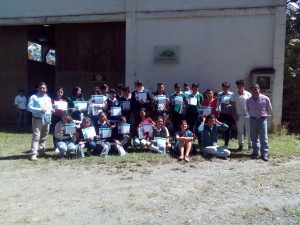
Colombia,despite being famous for the issues of drug trafficking and the violence, is a little-known country. All people know about it comes from the tv series, a misrepresenting narrative ending up in a stereotyping and simplification process. During these 6 months I also had the chance to learn about the colombian conflict and its links with drug but also emeralds trafficking, to understand how it affects the society and characterized attitudes and cultural habits. But mostly, I have learned that Colombia is much more than its historical violence. The country was home of the latin american independence, the ancient territory of the Muisca indigenous people, the land of “El Dorado”, it is the country of the two oceans, of biodiversity and ethnic coexistence and many other things. EVS really get you over stereotypes and cliches.
MONTHLY ARTICLES
November 2017
November has been the most intense month during the whole EVS. Our collaboration with ARRAIGO is coming to an end and every planned activity and tasks must be completed. The first of many activities we carried out, is the Journalism and radio-phony workshop we realized for the students. Local experts and radio speakers intervened during this conference we held, providing information and knowledge, also showing related devices and their functioning. The students really appreciate that.
I personally realized an English course project with the students of the institution “Las Mercedes”; so, they wrote, prepared and presented (in English) some recipes made of coffee in the professors’ room. They worked on it with commitment, so I am very proud of them. Meanwhile I supported the students of Sochaquira Abajo with their English task: to learn and sing Beatles’ “Twist and Shout” in occasion of the end-of-the year event. That was truly funny and it was useful to overcome their embarrassment.
We continued our Fridays in CANNOR, completing the training process, also providing a cafeteria class thanks to our friend and local coffee producer and barman Benjamin Piñeros, who taught the students how to make espresso, cappuccino and others. As a conclusion of this training program we gave the students attendance certificates, inviting their parents to a coffee tasting day in CANNOR. Some of the students were well acknowledged and could present to their parents the different stages of coffee production as they learned and practised it.

Carmen and I were in charge for organizing with the students the ARRAIGO five-a-side family tournament, a very nice and successful event. Many students demonstrated a high commitment, so they helped out installing equipment, they formed the jury during the tournament and worked on the hydration point. We also participated as ARRAIGO team, although we are not blood-related; surprisingly, we passed to the second round, then we quit losing the penalties. I scored a goal and made an own goal, well balance is important. Carmen, as captain and trainer, really took it seriously, her enthusiasm and yelling were somehow hilarious.
The newspaper “Arraigo Guayatuno” was finally impressed, so we picked up about 300 copies to distribute all over the village. That was really an excellent outcome.
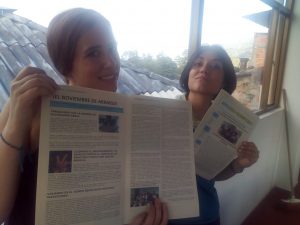
The month ended with the ARRAIGO closing party. I was in charge of the logistics organization of this event. So, we celebrated this occasion with a lunch offered by the project to the students and their parents, schools’ teachers and local people related to ARRAIGO were also invited. That was a nice and emotional party, as the students thanked us with little presents and speeches, so, for example, we received a school uniform t-shirt signed by all of them, with dedications. Some of the parents also appreciated our work. During the event we provided a facebook home page made of paper, so we took funny photos of all our guests.
November was also the month of Guayatà town festival. It lasted 4 days, and it was a bundle of folklore, traditional music and dances (Carranga), beer, a LOT of beer and different shows as parades and comic corrida.
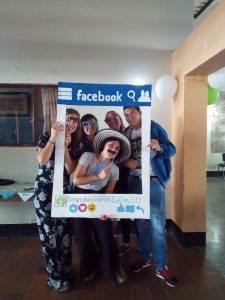
October 2017
October has been the month of travels and changes. Thanks to some vacation days we built up, Margherita and I went travelling on Colombian Caribbean coast on the north side. We flew to Santa Marta, we visited amazing Palomino and the Tayrona Park, then we travelled to fascinating Cartagena, enjoying the colonial architecture, cultural life and wonderful beaches.

When we went back to Guayata, I started my volunteering service in ARRAIGO. Together with my coordinator Jehiner we set up my program and tasks. So, I started giving the first English classes to the two school groups (8 grade) of the institutions of Las Mercedes (located in the village) and Sochaquira Abajo (a rural “vereda” out of the village). I also supported my mates in their other classes, especially the journalism one, during which I worked with the students on articles they were writing on local matters and the ARRAIGO activities they participated to. On the Fridays I was involved in the logistics coordination of the coffee production training, taking the students to the Cooperative CANNOR and supporting the trainers during their classes. That activity is very interesting, it is a great training opportunity for local students who are raised in a community traditionally tied to coffee sector. Also, it is a good occasion for us the volunteers to learn something new and to deepen our social-economic knowledge of the society we are living in. During this month I also worked in the ARRAIGO office, preparing my English classes and adjusting and drafting the articles we wrote in class during the journalism session. Margherita and I developed this “Students’ newspaper project”, so I handled the drafting activity and she handled the graphic realization. Also, we were all involved in the organization of a didactic trip to the municipality of Macanal, offered to the students partly using the funds they raised up during the Mogolla Festival, where we sold local products prepared by their parents. So, on the 30th we all travelled to Macanal, visiting the Ecologic path “Sendero verde La Esmeralda”, the waterfall “La setenta”, the hydroelectric reservoir “La Esmeralda” and the pueblo of Macanal. The waterfall, 130 meters high, really impressed the kids, who swam in the little pond under the water jet, taking as many photos as possible. The view of the reservoir from the ecologic path was awesome, we could see waterfalls within high green mountains, in turn reflecting on the water. We had a great lunch and we went up on the village visiting the Macanal main park, eating an ice cream. Many of the students had never left Guayata up to that time, so the enthusiasm they had was contagious and somehow special. They also had the opportunity to discover part of the region they live in, as a first step to enhance that sense of belonging ARRAIGO wants to strengthen in the students. This trip was reported in one of the article we published on the newspaper in November.

During October I could deepen my relationship with the local community, talking with people, with different institutions and exploring the natural territory around. The best part has been daily deepening my relationship with students, teaching and somehow learning by them.
September 2017
September was not exactly great. Things changed, as my coordinator left her charge in the NGO and I was left with little to do, with no coordination at all (although it had never been satisfying, even before). The other two members of the NGO were very occupied in their respective jobs, so there was no one to work with during the day, there were some (inconclusive) meetings during the late evenings (until 10/11PM). In general, the personal relations within them were complicated since the very beginning, affecting the working conditions, but worsened between August and September. I went on giving my English classes four times a week and working with the students involved in the GAL’s youth project, even though the kids were each time lazier, many of them were often missing the meetings.
I didn’t have the possibility to move during this month, as I participated in two events the NGO was organizing with students in partnership with the local school. The coordinator only came back for one of these, as she wanted to maintain this last commitment, I was asked to stay but wasn’t requested much from me. I could at least play a part during the preparation of the other event (photography exhibition), so I was coordinating the students’ research activity. That was the only interesting (but temporarily) task I could accomplish.
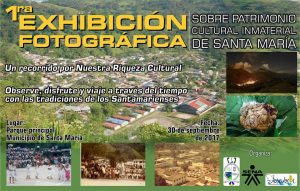
Towards the end of the month, I decided to talk with the GAL’s director to explain him this situation and arrange a solution, we concluded my transfer to ARRAIGO project was the best one. So, I reported my decision to my colleagues, who totally understood, given the conditions and their responsibilities.
August 2017
A DIFFERENT SUMMER.
August is the Italian month of summer, so logging in on facebook I could see a bunch of photos of my friends relaxing or dancing on a sunny beach. Well here is winter, it is raining quite often and I am as pallid as if it was January….
That was just to say that time perception changes a lot around the world and I’m feeling a bit confused, especially because, going back home in December, I’m missing the first summer of my life!
No more chatting! During this month, I had the opportunity to get deeper in my teaching activity, improving my feeling with the students and implementing non-traditional funny classes, made of conversations, videos, karaoke and games.
During the first weekend, together with Margherita, we travelled to Tunja, capital of the department of Boyacà. We also visited Paipa and the amusing Paramo of La Rusia, at an altitude of 4000 metres, an ecologic paradise populated by the endemic plant “frailejon”, a water provider which capturing it from the fog, is responsible for a high quantity of available water of the country. We spent the night there, enjoying the spectacular view from our cabana and suffering the low temperature.
The month of august was much about projecting activity as the NGO is leading a group made of touristic operators, willing to form a new company, which would benefit from a public tax relief program “ZOMAC” (Zona mas aftectada por el conflicto armado). My task is mainly to study useful documents, make researches, and diagnostics, taking active part to the planning and decision process.
As always, I’ve hold meetings with the students involved in the GAL’s project “Jovenes Emprendedores”, coordinating their activities and evaluating advances. Within the project of the cabañita la libertad, together with the guys, we had two meeting with the cottage’s owner, dealing how to manage it, under which contract and defining the investment he is going to grant. For what concerns the project “Valle de Tenza” I have worked with the students in the information seeking activity, mostly functioning as a messenger between them and GAL’s associated.
I spent the second last week of August in Guayata, headquarter of Arraigo project, supporting the other volunteers with their activities. It was a pleasure to help them organizing their participation to the Mogolla festival (the Mogolla is a local product; let’s say a kind of donut without the hole). We managed the Arraigo stand, selling gastronomic products prepared by the families of the kids involved in the project. Also, we the volunteers were wearing the traditional peasants’ dress and sombrero, looking just as “campesinas guayatunas”. The kids’ participation was so great that we achieved a complete sold out! I had the chance to support Margherita and Carmen during their classes in the local schools and other activities. The time spent in the volunteer’s house has been great!
We spent the last weekend of August in Garagoa, where Marta lives and works, enjoying the biggest town of Valle de Tenza, definitely more animated.
July 2017
JULY: birds, projects and English classes
As my colleague Eibar always says, I became a public figure in Santa Maria, and the month of July is much about this. During the first two weeks, I visited the local school, meeting different groups of different grades, thanks to the kind assistance of my host Nelly (also informatics teacher). Broadly, I happened to introduce myself to students from 11th to 17th years old, telling them about my education, my working experience and my interests. The idea was to show them the range of the existent possibilities in a wide-open world, namely the mobility programs such as Erasmus + and EVS, the traveling options and job’s opportunity. In addition, we used this time to consider the differences between South America and Europe, and more specifically between Colombia and Italy. The students showed a very positive attitude, asking all sorts of questions (about politics, gastronomy, habits, geography etc.), some of which sounds comic: Do the Europeans take shower every day? Or…Are there any fat people? This was a good occasion to point out some of the unique characteristics and products of Colombia and Santa Maria, to make them conscious of their heritage. In other two occasion I supported the local school, by assisting the teacher during an English class and by offering the professors a brief lecture on human rights (as they were interested in my previous experience in Amnesty International).
During these last weeks, I deepened my knowledge, by all the meanings. I got to know the territory: natural resources, local economy, networks, projects, local culture, this was only possible thanks to my mentor, my colleagues, my new friends and all the actors involved. One of the most interesting process is finalized to the consolidation of the birdwatching knowledge and activity in Santa Maria, channelling the community efforts towards the creation of a touristic destination focused on this theme. That’s why some of the people involved are benefiting from a birdwatching course, offered by the institute SENA and financed by the Hydroelectric company AES. I had the opportunity to participate in some classes, showing my very scarce talent in focusing with binoculars; by the way, now I can recognize some species of birds, obviously only by their common name in Spanish: mochilero, comequeso, azuleto, chulo, gallito de roca…. (Don’t ask me for the scientific Latin names please!).
I started following the graduation projects managed by some students in partnership with Descubrir NGO, they’re focused on the identity building, event organization and touristic guidance. On Fridays, I held meetings with the young entrepreneurs (inside the GAL framework and the microcredit program led by Karen), in order to develop their business ideas. One of these concerns the administration of a touristic cottage kindly provided by the owner to a couple of brothers (a girl and a boy) part of a family victim of the Colombian conflict. During the 22-23th weekend the other volunteers came visiting Santa, being the first guests of the cottage, called “cabaňita la Libertad”. We had some “rumba” at the local disco, and a funny after-party in the cottage, where Carmen and Margherita showed their dancing skills. We also went walking to the creek “La Cristalina” together with the hosting guys, Karen and her sister Ivette (also part of the cabanita project). Despite the rain, we had a kind of bath in the freezing, streaming water.
On the 24th started the English course provided by me and directed to two groups of students, composed of touristic operators and students involved in the process. Each group benefit from a class twice a week; the methodology of the course try to be as compelling as possible, focusing on direct dialogue.
Thanks to the kind teaching of Karen, I learned how to cook the super typical Arepa, a kind of corn pancake, made with rennet. By the way, the best ever is still the don Victor’s Arepa, available at the “asadero” settled in front of the NGO office, place of constant temptation. Don Victor’s little daughter Sharick is a 7 years old honeybee, always strolling and snooping around in the office. She captures random English words, quickly memorizing them and, at the end of the class, she leaves very impressive drawings of birds on the blackboards.
June 2017
EL MES DEL DESCUBRIMIENTO
One page is not enough to report all the events occurred during these first two weeks, neither the feelings nor the discoveries. That Air Europa flight brought me to another dimension, another world living seven hours in the past. 15 days of shifting changes, as we arrived in Bogotá everything was going a thousand time faster, our tongues were suddenly speaking differently. We got to know each other, within volunteers (Carmen and Margherita) and Liliana, who’ll be my supervisor in a week or so, we appreciated a cold shower, we shared a room as if we weren’t strangers, bizarrely ready for a brand new day. The day after, Bogotá looked even bigger, coming and going by bus and taxies, at a point we were up on a panoramic street and the city appeared spread over the entire plateau. When Marta arrived, we were complete and we could leave the metropolis, towards Guayata, the real starting point of this exiting experience.
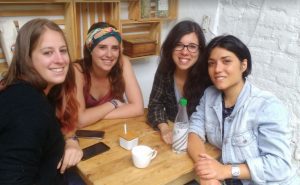
If I have to choose three words to describe this first intensive staying, then it would be people, coffee and… ants. Let’s start from the ants, we ate them, and they attacked me. The “hormigas culonas de Santander” are a delicious appetizer if you dare to try them, except for the little crunchy paws. By the way, Carmen owns tapes to prove our courage, and our enthusiasm obviously. The other part of the story is way less funny (or maybe not), it deals with my passion for ant’s nests. The first I stepped on was the lethal one, hundreds of ants biting my ankle while I was jumping and throwing my boots, as if it was a shark attack. Soon after, it was all over, although my feet persisted being fatally attracted by every nest on the path.
Coffee, coffee and coffee. Coffee trees, coffee factory, cafeteria. El Café Fonzaque is a unique product of Guayata, our visit at the “Finca” was amazing, as we learned about the stages of the production process, we tasted it and made a discovery: Coffee is NOT black, not before its roasting! That same coffee is the one we have tasted every day in Cafeteria Fonzaque, managed by Benjamin, a cheerful, proactive man, with a past tied to the Colombian complex history, a bright mind and a positive attitude. Coffees. We drunk 5 during one lunch, at the Finca of Don Armando in SutaTenza, where we met all the actor tied to GAL Valletenzano, enjoying a great time and a warm, warm welcoming.
Here’s the moment of the people. Paola and Quique did a great job to integrate us in the local context, also spoilering what Marta and I would have found in Garagoa and Santa Maria. We deepened our knowledge of EVS, Younic project, GAL Valletenzano and got all the logistic information. We finally met Mario, manager of the GAL and our only kind – of- mythical contact with this Colombian adventure up until a couple of weeks ago. We met Jehiner, coordinator of Arraigo project. Moreover, I met my host Nelly, my mentor Karen and Liliana again, who took me in Santa Maria to my new home. As I write these lines, a week has passed since my arrival in Santa. Nelly’s family, my host, welcomed me so warmly, with a cup of aromatica, a rich dinner and some Guateque’s craft beers we got on the way. I met Eibar, an associate of Descubrir ONG, who taught me the first notions of the local wildlife and a beat of indigenous history. The day after I got to know Santa, strolling the streets and meeting Karen’s family, which is giving me lunch and a great time every day. On Wednesday the 28 th I had my first encounter with nature, the very early awakening definitely worth the touristic walk given by Descubrir for a group of three hikers from Antioquia. Together with Liliana and Carol & Dayana, two 15 YO treinees from the school, we guided them to the
awesome waterfall “Cascada de la 70”, to the “Embalse la Esmeralda” house of the Chivor Hydro Plant and finally to the “Cristalina”. The week ended by cleaning and settling the new NGO’s office, a wide space with a great aggregating potential. For the weekend the volunteers’ team came together in Bogota, to enjoy a crowded, heated journey made of heavy metal concert, busy buses, street food, hipster urbanity and a super hosting from Jehiner’s family in their apartment.
In a nutshell, June was definitely the month of the discovery, o sea el mes para Descubrir!
PRE-DEPARTURE ARTICLE
“The best teacher is experience and not through someone’s distorted point of view”.
Rome, Friday 16th June 2017
Far from being just another sententious quote, this is drawn from one of my favourite novels: Jack Kerouac’s On the Road. This simple, short sentence perfectly represents that impulse underlying my motivation. EVS in Colombia is an opportunity for exploring, by living a direct experience and plunging into a diverse community. My expectations are a messy mixture of imagination, envisages, desires, energy and emotions, which is hardly describable. Let’s give it a shot:
I expect to go through a growth experience
I expect to learn from each other and to act as a group
I expect to develop a constructive program achieving significant results for everyone involved
I expect to familiarise with the local community
I expect to enjoy people, the places and the nature
Some say fears are mostly composed of conjectures and self-deceptions, nevertheless it would be abnormal not to feel any uncertainty! As every change and every adventure is a source of uncertainty too, I feel it in a way but it does not scare me. I believe difficulties such as language, different habits or possible misunderstandings can definitely be overcome.
Can’t wait to be there!
